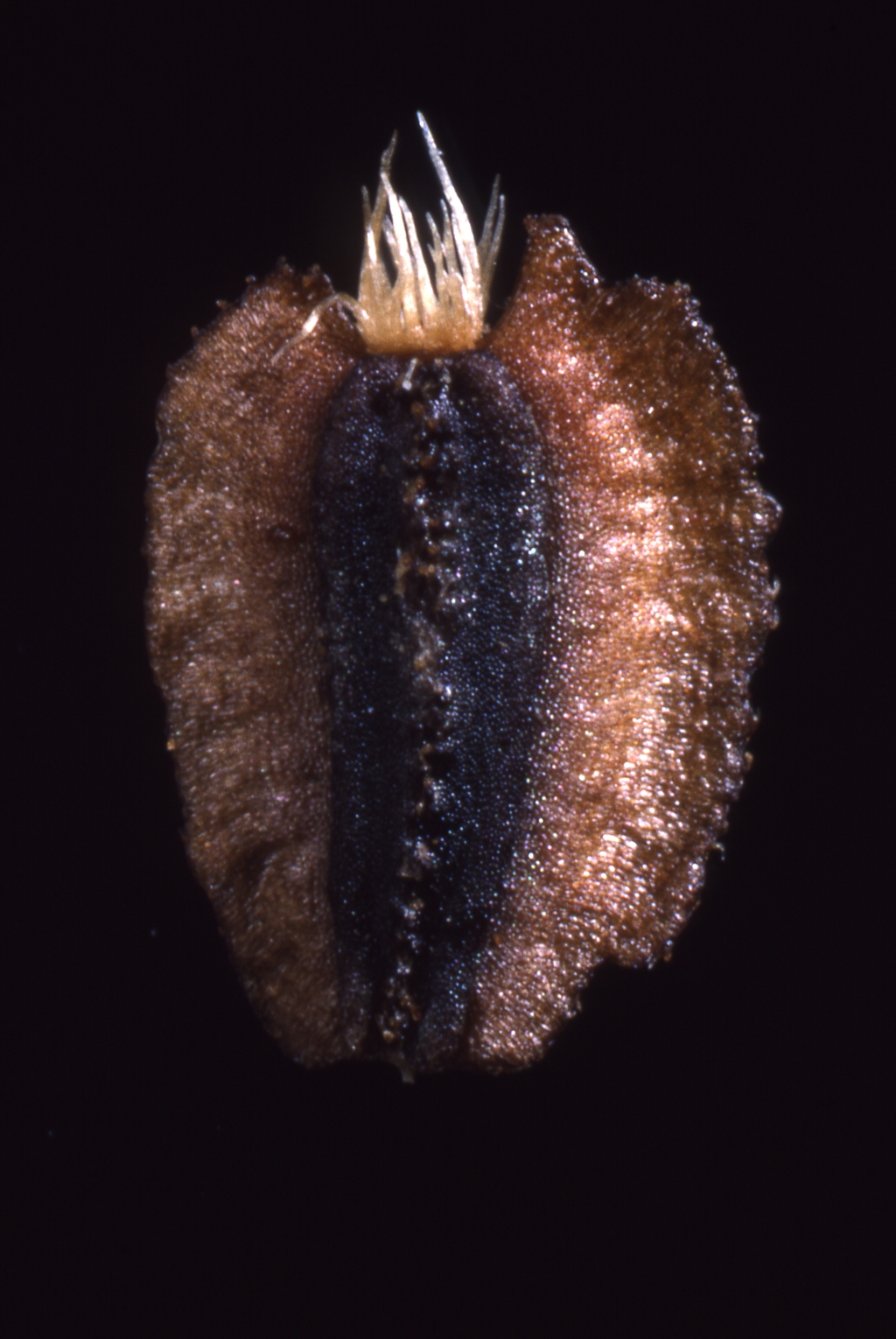Brachyscome nivalis
F.Muell. Snow DaisyClumping herb. Leaves mainly in basal clusters, c. oblong in outline, 3–15 cm long, 8–20 mm wide, 1- or 2- (or 3-)pinnatisect, largest 1-pinnatisect leaves more than 7-lobed, glabrous or with cottony eglandular and scattered glandular hairs towards base, margins scarious, bases dilated. Peduncles 1 per tuft, glabrous, with 1 or more entire linear leaves; bracts 15–40, 1–2-seriate, c. equal, narrowly elliptic, oblong, oblanceolate or lanceolate, 7–10 mm long, 1–2.5 mm wide, thin, mainly green but with narrow scarious margins and apex, apically obtuse and purplish, glabrous except for minute glands on the margins; ligules 10–15 mm long, white (pinkish in bud). Cypselas obovate, 2.3–3.6 mm long, 1.4–2.5 mm wide, uniformly brown or body darker than the wings; lateral faces each with 2 longitudinal ridges, tubercles in more or less central line, eglandular and glandular hairs present; wing entire or barely notched, hairy; pappus c. 0.4–0.7 mm long, white, c. equal with or exceeding the apical notch. Flowers Nov.–May.
HSF, HNF, VAlp. Locally common in sheltered rocky sites in alps (e.g. Mts Buller, Cobbler, Hotham and Wellington, and Bogong High Plains), occasional in grassland, herbfield or Snow Gum woodland communities.
Short, P.S. (1999). Brachyscome. In: Walsh, N.G.; Entwisle, T.J., Flora of Victoria Vol. 4, Cornaceae to Asteraceae, pp. 835–859. Inkata Press, Melbourne.
 Spinning
Spinning
